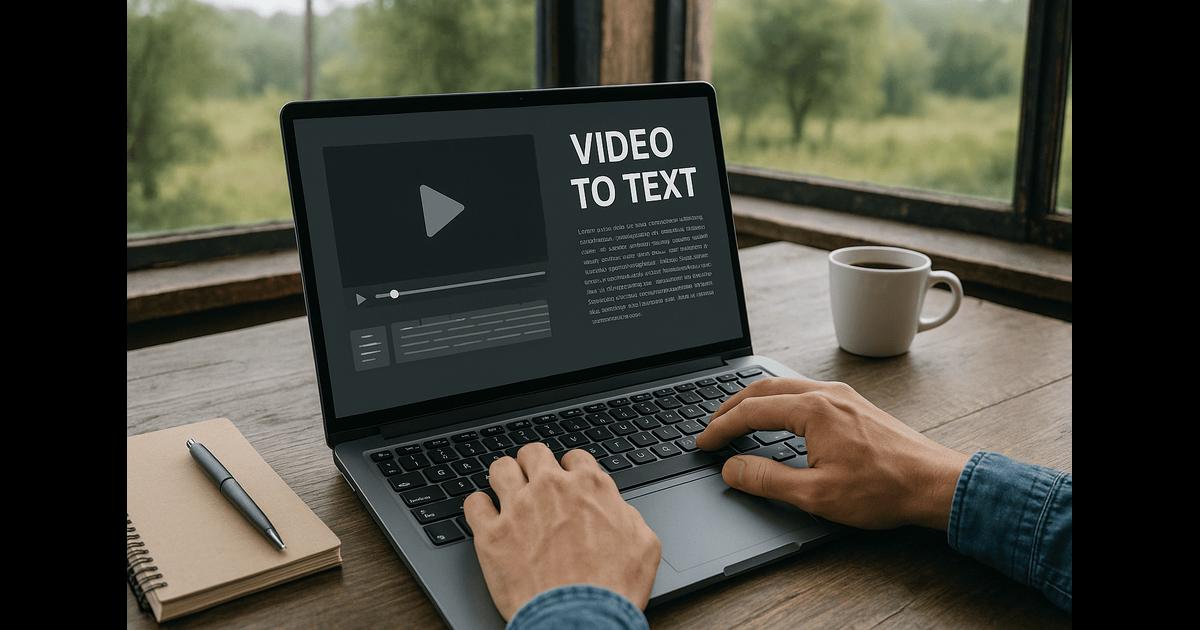How Free Video to Text Tools Are Changing Music Content
As digital content continues to dominate music promotion and communication, the tools used to transcribe and subtitle videos are evolving rapidly. Free video to text converters are increasingly integral in transforming audio-visual content, making it more accessible and shareable across platforms. This article explores how these tools are changing the way artists, labels, and fans connect through multimedia.
Figures for 2024 show that almost three out of four music fans now get their updates through social apps, the International Federation of the Phonographic Industry (IFPI) says. Non-stop reels, live Q&As, and quick peeks behind the curtain put sound and sight in front of listeners the moment a new hook drops.
Yet for people who read rather than hear, whether due to hearing loss or a different first language, that rush of images and vocals can feel exclusive and confusing. Plugging in free video-to-text services turns fast clips into subtitled snapshots that anyone can scan, breaking down those barriers at almost zero cost.
The Workflow: Bringing Audio-Visual Content to a Wider Audience
New, no-cost video-to-text tools have made it much easier to share audio-visual projects with larger crowds. In the past, creating clean transcripts or subtitles meant long hours of typing by hand or paying expensive freelance rates. Now, countless online services rely on speech-recognition technology to turn the spoken word in a video or audio file into editable text.
That shift lets musicians, filmmakers, educators, and other creators build accessible versions of their work at speed and with minimal hassle. The usual routine is straightforward: the user uploads a clip-whether a studio session, interview, vlog, or gig-to a compatible site. The program analyzes the sound, spits out a rough transcript, and then gives the editor the chance to tweak the wording and fine-tune the timestamps.
From there, one click turns the cleaned text into subtitles or captions that float over the picture, letting deaf viewers, hard-of-hearing fans, or people seeking translations follow every word. Because the tools are free, small labels and indie artists can deliver polished, inclusive media without breaking the bank. When those same transcripts spill into Twitter threads, Instagram reels, or streaming playlists, they pull in audiences who favor on-screen reading or need an alternative to pure audio.
Subtitles, Transcripts, and Language Accessibility in Music
Visit any music channel today and you’ll notice subtitles and written transcripts cluttering the screen. Once seen as optional frills, these small blocks of text are now lifelines for clear communication. They help listeners catch quick verses, bridge language gaps, and keep a global audience tuned in. In the background, free video to text converters are able to transcribe lines almost instantly, making automation a hidden hero.
Imagine a band dropping a simple lyric video. With autogenerated captions on, viewers can sing along and grasp every word, whether they speak the albums language or not. The same engine swaps English for Spanish, Korean, or any local script, often within seconds. That speed turns a bedroom release into a party on several continents at once.
Theres another reason to push for text on screen: access. More than five percent of people now live with disabling hearing loss, according to the World Health Organization. Their seats at streaming gigs, press briefings, and daily music clips ought to be front row. Modern free tools can deliver clean subtitles with a couple of taps, so producers waste little time or money getting it right. In other words, making music open to everyone no longer demands an expensive studio or an engineering degree.
Practical Applications: Studio, Interview, and Promotional Use Cases
Free video-to-text converters have proven their worth at nearly every point in music creation and marketing. Inside the studio, they quickly jot down lyrics, capture off-the-cuff melody notes, or log engineer comments while tracks pile up. Those tidy transcripts speed up post-session editing, lyric tweaks, and even protect song ideas with clean copyright records.
Artist interviews also gain from automated text-making. Reporters, publicists, and label staff can pull ready quotes and press releases with almost no delay. That fast output is critical during promo pushes, when outlets expect news stories yesterday.
Automatic captions shine on trailers, sneak peeks, backstage clips, and concert streams. Subtitles hold viewers on TikTok, Instagram, and YouTube, where snack-length clips beat epic uploads. Captions also keep eyes glued during mute scrolling in crowded cafes or bustling subway cars.
These new tools mark a clear turn toward content work that is easier to share, faster to create, and open to everyone. User-friendly free video-to-text converters sit at the heart of the change, handling large files in seconds. Thanks to them, artists and labels can prepare videos for every outlet without sinking a fortune into equipment or staff.
As the way music speaks to fans keeps shifting, quick, reliable transcripts and subtitles are no longer optional. Free video-to-text services give creators of all sizes the chance to reach more people in the correct language and format. Whether its a studio recording, a livestream chat, or a clip posted on TikTok, this simple tech is helping build a friendlier, more active scene for sharing and enjoying music.

Premium music analytics, unbeatable price: $19.90/month
11M+ artists, 100M+ songs, 19M+ playlists, 6K+ festivals and 100K+ labels on one platform, built for industry professionals.


